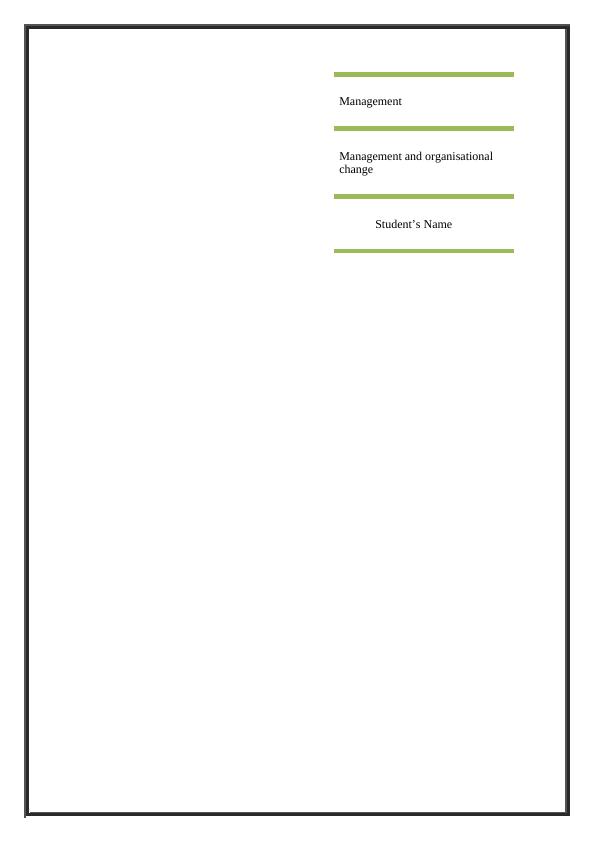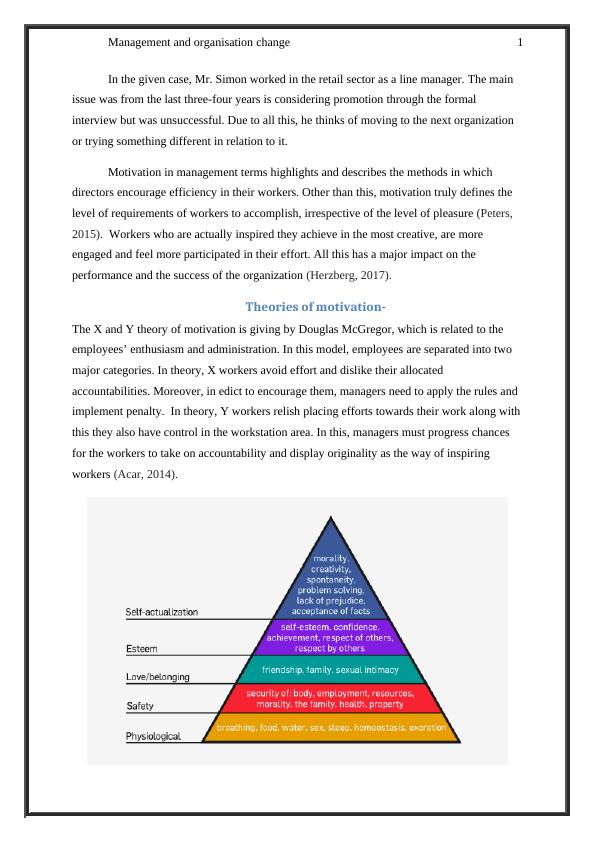Management and Organisational Change
Added on 2023-04-05
6 Pages1359 Words366 Views
End of preview
Want to access all the pages? Upload your documents or become a member.
Introduce to the Motivation Theory
|6
|1163
|40
Theories of Motivation and Their Application in Modern Workplace
|7
|1757
|204
Traditional and Contemporary Assignment
|4
|1044
|36
Chapter 7 – motivation concepts PDF
|4
|1456
|264
Analyzing the Impact of Motivation Theory on Employee Performance: A Study on Starbucks
|13
|3570
|90
Description of Motivation Theory
|7
|1025
|12



